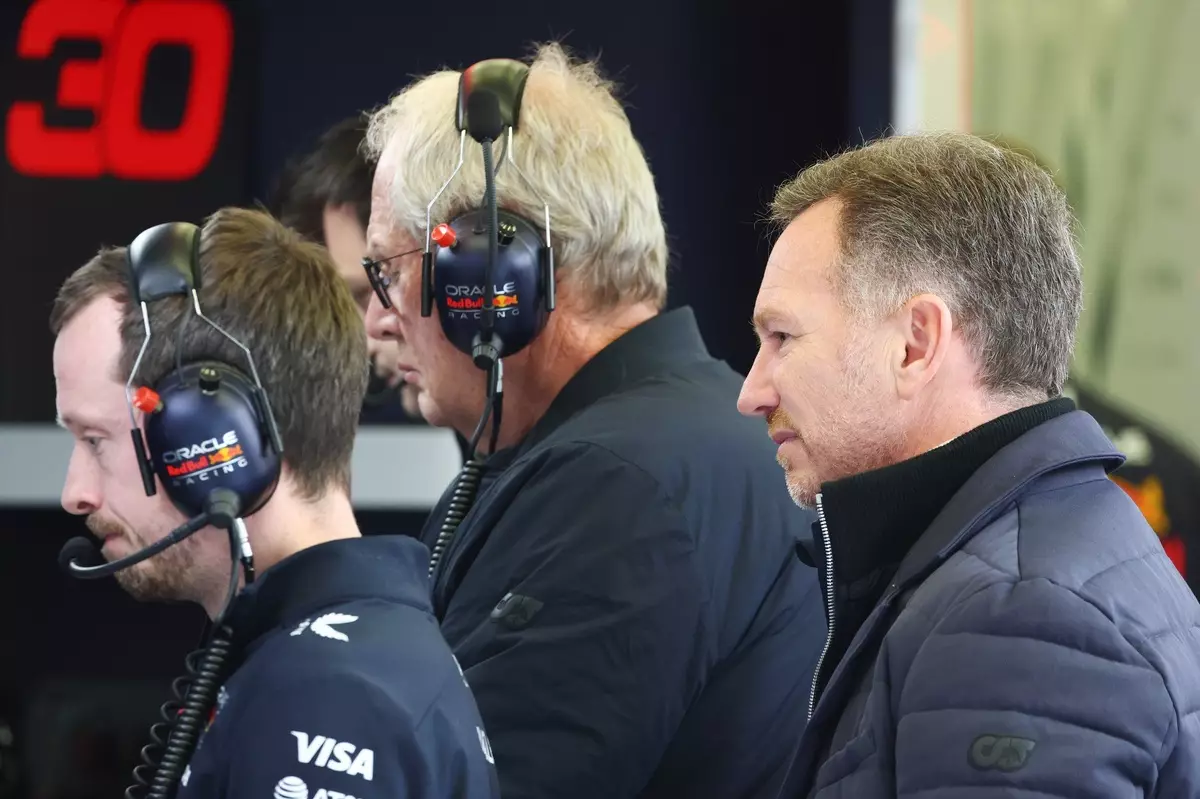Christian Horner, the principal of Red Bull Racing, recently expressed a profound frustration with the team’s ongoing struggles in Formula 1 as they grapple with issues stemming from a significant disconnect between their wind tunnel data and real-world track performance. This revelation rings alarms, considering that Max Verstappen, though still adorned with his champion’s crown, has not been able to consistently deliver the results expected from a Red Bull car. Horner’s metaphor of “looking at two different watches” poignantly encapsulates the challenges the team faces: distinct pathways of data that ought to align but instead lead to confusion and inefficiency.
Despite collecting wins, including the recent Japanese Grand Prix, the overarching narrative has shifted; the once-dominant team is now floundering in the wake of evolving competitors, particularly after a lackluster performance at the Bahrain Grand Prix. Red Bull’s recent “crisis” meetings highlight not just a quest for answers, but a critical inflection point that could define their trajectory for the coming seasons. There’s a pressing urgency to revert to their former glory while managing the limitations imposed by the existing technical framework.
Historical Context and Current Challenges
Over the last few years, Red Bull Racing has been synonymous with dominance in Formula 1. However, the end of the 2024 season unveiled a series of technical hurdles that foreshadow difficulties in 2025, when regulations are set to remain static. Without the opportunity for a major upgrade due to regulatory continuity, the challenge lies in fine-tuning the existing car to enhance performance against rivals – a tough order when margins for improvement are razor-thin.
The current troubles aren’t mere flukes; they mirror issues that helped shape the narrative of the latter part of last season. Horner’s acknowledgment that the troubles are “similar” indicates a structural problem that goes beyond typical race day performance variability. It underscores a deeper mechanical and aerodynamic crisis that demands urgent attention if Red Bull hopes to regain its competitive edge.
Analysis of Aerodynamic Limitations
One of the focal points of the current dilemma lies in the aerodynamics of the RB21. The team is confronting a problem in the entry phase of corners, an area critical to maintaining speed and stability. Horner has perceptively noted that the aerodynamics need refinement to instill confidence in Verstappen as he navigates tight entry points during races. This specific issue can have significant cascading effects on lap times and overall race performance, further compounding their struggles.
With Verstappen relying on superior grip and stability, the failure to harmonize wind tunnel predictions with track realities renders the design tools ineffective. As Horner eloquently articulated, the existing tools simply do not mirror the track conditions accurately, marking a fundamental flaw in the data-driven approach that has served successful teams in the past. Until Red Bull can sync their technical architecture and practical performance, they risk being left behind in a sport that demands relentless precision.
The Road Ahead: Building for the Future
While the current season presents a myriad of challenges, there lies a glimmer of hope for Red Bull Racing in the form of a new wind tunnel facility, projected to come online in 2027. That development could offer the team more accurate configurations and predictive analytics, aiding in the quest to develop aerodynamic superiority. However, the regrettable reality remains: they will have to navigate the next season and a half with the tools that are proving inadequate.
Horner’s optimism about improving data collection and utilization points to a strategic pivot. As the team evaluates more on-track performance data, there’s an opportunity to recalibrate their approach and innovate solutions that historically have characterized their operations. The growing body of valuable data accumulated over four races could yield insights; however, transforming that insight into effective engineering solutions will demand creativity and forward-thinking.
While it’s imperative for Red Bull Racing to resolve their issues to remain competitive, the challenge intertwines with lingering questions about the broader landscape of Formula 1. With other teams, such as Mercedes and Haas making tangible strides, Red Bull’s potential for redemption rests on an ability to innovate under pressure. Their storied history in the sport has equipped them with the expertise to adapt, but time will be the ultimate judge of whether their legacy of success can withstand this testing period.


Leave a Reply